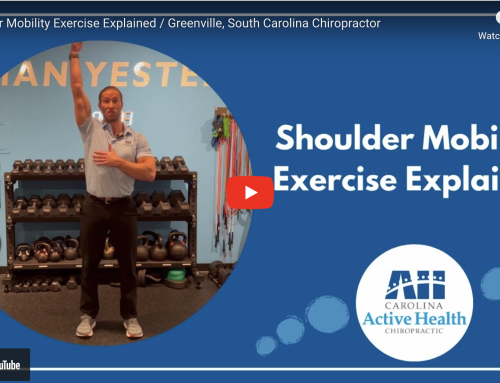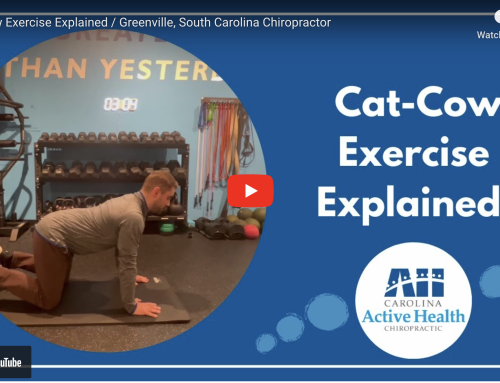Breathing
Breathing
Have you ever thought about the way you breathe? We perform this movement more than any other movement, performing approximately 20,000 times a day, yet we often overlook this critical movement. A surprisingly large number of people have dysfunctional breathing.
This can lead to an array of disorders and dysfunction that can affect how you feel and move. Tight traps? Tight scalenes?
Do you feel short of breath? Do you feel that you are not able to get in enough air?
These can all lead back to this dysfunction! Dysfunctional breathing can even cause an imbalance in biochemistry, affecting your body’s pH level.
Additionally, slow deep breathing can activate our parasympathetic, or rest and relaxation, nervous system. This assists in the relaxation of musculature, body, and mind. Ever wonder where the phrase take a deep breath comes from? A great trick for one of those difficult nights to sleep is to lay down on your back and focus on taking ten deep breaths.
Finally, proper breathing mechanics can assist with movement. We use the analogy that dysfunctional breathing can be like static in the nervous system. In order to have true motor control of the core and surrounding musculature, we need to own the most basic muscle pattern of all.
So are you dysfunctional? There are a few screens to check to see if you have dysfunctional breathing. The first is called the functional range capacity screen (FRC) and looks at a normal breath.
1. First, breathe in, then breathe out naturally. At the end of the exhale, hold your breath by plugging your nose.
2. Hold your breath until you feel a clear desire to breathe or experience involuntary muscle activity from the diaphragm or other breathing muscles.
3. Start a timer as soon as the individual holds their breath, and stop when they release their nose or you see the first sign of muscle activity.
Can you hold your breath for 25 seconds or more? If not, that can be an indicator of dysfunctional breathing. You can use this test as a baseline for progress. So if you’re having difficulty, how should you breathe?
It is important to note that this type of breathing is applicable for resting breathing. I’m not mean enough to force you to think about breathing when you’re exercising or under distress! The first thing to do is an easy self-check on your breathing technique and pattern.
The first step is to check your INHALATION. When you breathe in, it is most efficient to breathe in through your nose. If you breathe in through your mouth, try placing your tongue on the roof of your mouth to block your airway, forcing you to breathe in through your nose.
Now that we’ve gone over this, the most important (and difficult) part is next. The diaphragm is not only the primary muscle for breathing, it is also the most efficient and effective breathing muscle. Understanding how it works can increase the efficiency of every single breath you take. Again, we think one cause of dysfunction is a learned behavior that can go all the way back to our childhood.
Think back to those awkward preteen or teenage years, when your self-consciousness typically peaks. We do so much to change our image, including changing breathing. If your town was anything like Wheelersburg, Ohio, the pool was the place to be in the summer. As you walked around the pool, you would do anything you could to boost your appearance. During this time of insecurity, we do everything we can to have a trim waist, not expand our stomach, and even suck our gut in.
This does not allow the diaphragm to work properly, and the only option is to breathe in through your chest. When we inhale, we should allow the air to come down and fill our stomach. This creates a negative pressure in the lungs, allowing air to be forced in. If we do not do this, our body still creates a negative pressure, but this is down by rising the chest with accessory muscles of breathing.
This again is not ideal and not efficient. For a quick check, place one hand on your stomach and one hand on your chest. As you inhale, the hand on your stomach should rise and your top hand should stay still, or at the very least not initiate the breath. If your chest rises and your stomach stays still, you have dysfunctional breathing, and we will go over how to correct that next.
If you’re performing the correction, focus on relaxing your chest and surrounding musculature. Slowly inhale through your nose, allowing your stomach and lower ribs to expand independently of your chest. Again, focus on keeping the top hand still, and allowing the air to enter your stomach, expanding it almost like it were a balloon.
Also, think in terms of 360 degrees, or as a barrel pressing out on all sides of your stomach, not just in the front. This allows the bottom ribs to expand. Exhale out through your mouth, slowly and fully, allowing your stomach to fall to your spine.
Be patient! This takes a long time to “feel” and correct. If you don’t get it right away, stay diligent. Know that the more musculature you have engaged the more difficult this is to feel, so I recommend starting on your back and then working your way up to sitting and standing.
I also recommend repetition, and quality repetition at that. Practice makes permanent. To start, set a timer for every hour. Take 10 quality deep breaths in during this time. Over time, your body will begin to ingrain this motor pattern, but it takes a long time. You will know that you’ve got it when you go to check your breathing, and you are already performing it correctly. Here is another drill to help feel this.
Crocodile Breathing Static Diaphragmatic Breathing
Begin in the prone posture by positioning yourself face down, so that your stomach is on the floor with your forehead on your hands, both palms down, one covering the other.
Make sure the chest and arms are relaxed, and you are as “flat” as you can get; your neck should be relaxed and comfortable. You should feel that you are on your chest, not on the edge of your ribs.
Breathe in through the nose and feel the air move down past the chest into the “stomach”. When this happens, you will feel the abdomen push out against the ground and laterally, this should happen naturally without you forcing your stomach out.
1. Take a nasal inhalation and exhalation
2. Nasal inhalation should be a low, slow 3 seconds
3. Then a brief pause
4. Nasal exhalation should be slow and full 4-6 seconds
5. Then a longer pause (2-3 seconds)
6. Then the next breath cycle
7. The air should expand in a 360-degree fashion filling the cylinder of the abdomen








